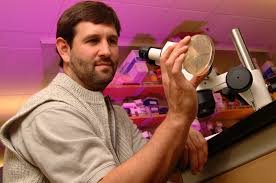Brad Cairns, PhD, takes the helm as Chief Executive Officer of Huntsman Cancer Institute (HCI) at the University of Utah, effective September 1, 2025. He succeeds Mary Beckerle, PhD, following her nearly two-decade leadership which elevated HCI to international prominence. (University of Utah Healthcare)
Cairns brings decades of pioneering research in cancer epigenetics coupled with robust leadership experience within HCI and beyond. His appointment signals a strategic pivot towards precision oncology, rural outreach, and translational science. The transition opens a new chapter for both the institution and cancer patients across the Mountain West.
New Leadership, Fresh Vision
Building on a Strong Foundation
Under Mary Beckerle’s leadership from 2006 to 2025, Huntsman Cancer Institute made remarkable strides: it achieved designation as a National Cancer Institute (NCI)-designated Comprehensive Cancer Center, and expanded its clinical capacity and research footprint substantially. (Newswise)
Bed capacity was increased from around 50 to 148, outpatient visits surpassed 350 000 annually, and the institute doubled its laboratory space while securing roughly US$140 million annually in research funding. (University of Utah Healthcare)
Cairns, who has been with HCI since its founding in 1999, served as Chair of Oncological Sciences, Chief Academic Officer and led major institutional initiatives in faculty development, student training and statewide cancer-education collaborations. (Newswise)
Strategic Priorities for the Future
As CEO, Cairns has articulated a clear set of priorities:
- Precision medicine and tumor “avatars” – using laboratory-grown models and AI to tailor therapies for individual patients.
- Genetic discovery and resilience – focusing not only on genes that cause cancer but on genes that protect against it.
- Closing the gap in rural and underserved care – expanding telehealth, mobile screening units and partnerships to reach patients outside urban centers.
- Education and workforce development – ramping up experiential learning through collaborations with regional universities and leveraging data-science initiatives. (Newswise)
The overarching aim: translate discovery into deliverable outcomes, faster and with broader reach.
Milestones at a Glance
| Milestone | Description | Significance |
|---|---|---|
| Sept 1, 2025 | Cairns begins as CEO of HCI | Marks the formal leadership transition. (Newswise) |
| 2006–2025 | Beckerle’s tenure as CEO | Growth era: NCI designation, hospital expansions, regional outreach. (Deseret News) |
| 1999 | HCI founding and Cairns arrival | Cairns has been embedded in the institution since inception. (SL Enterprise) |
| 2023 | Launch of new HCI comprehensive campus in Vineyard, Utah County | Part of future-forward infrastructure expansion. (University of Utah Healthcare) |
Implications for Patients, Research & the Mountain West Region
Strengthening the Patient-Center Experience
For patients, Cairns’ appointment means a renewed emphasis on:
- Personalised Therapies: Research-led care where each tumour can be modelled and tested in the lab to determine the best treatment path.
- Access Expansion: Outreach into rural and remote communities, addressing geographic disparities in cancer care.
- Faster Translation: Accelerating the pipeline from lab discoveries to clinic, reducing wait times and improving outcome-turnaround.
This patient-centric trajectory aligns with HCI’s mission and meets rising demands for precision oncology.
Elevating Research & Institutional Impact
From a research standpoint, Cairns’ background in gene-packaging and epigenetics—his lab isolated the SWI/SNF complex and clarified how gene-regulation machines are mis-wired in approximately one in five cancers. (Newswise)
Under his leadership we can expect:
- Enhanced integration of artificial intelligence and informatics in cancer biology and treatment planning.
- Broader collaborations across campuses and states, engaging undergraduate and graduate students in cancer research pathways.
- A push to discover protective genetic mechanisms—going beyond “what causes cancer” to “what prevents it.”
Regional Outreach — Mountain West & Beyond
HCI’s catchment spans Utah, Nevada, Idaho, Montana and Wyoming. Beckerle set up six affiliate cancer hospital sites in neighbouring states. (Deseret News)
Cairns aims to build on that legacy by:
- Embedding mobile screening and telehealth services in remote towns.
- Partnering with Utah Valley University and Brigham Young University to prepare regional research and clinical talent.
- Directing efforts to ensure that rural patients receive the same standard of care as urban centre patients.
In conclusion, Brad Cairns stepping into the CEO role at Huntsman Cancer Institute comes at a pivotal moment. With scientific breakthroughs abounding, health-care delivery evolving and regional cancer burdens growing, his leadership blends rigorous research credentials with institutional familiarity. Patients, researchers and communities across the Mountain West have reason to watch — and hope.
Trending FAQ:
Q: Who is Brad Cairns?
A: Cairns is a molecular biologist, former Howard Hughes Medical Institute investigator, elected fellow of the American Academy of Arts and Sciences and the Royal Society, and an experienced leader at HCI. (Newswise)
Q: What will change at Huntsman Cancer Institute under his leadership?
A: Key changes include greater emphasis on precision oncology, AI-driven modelling of tumour response, expanded rural outreach, and structured leadership/training programmes for the next generation of cancer scientists.
Q: Will the transition affect patients currently in care?
A: No immediate disruption is expected. The leadership hand-off is planned. The focus is on adding capabilities, not changing core clinical services. Patients can anticipate improved access and more personalised treatment options down the line.
Q: How does this leadership change impact cancer research funding in the region?
A: With Cairns’ background and networks, HCI is poised to attract continued and likely increased research investment. His expertise in epigenetics and informatics also opens pathways to novel funding streams.
Q: Why is rural outreach emphasised?
A: The Mountain West region has many remote communities. Historically, patients in these areas have had less access to comprehensive cancer care. Expanding telehealth, mobile units and partnerships helps reduce those disparities.
End of article.
